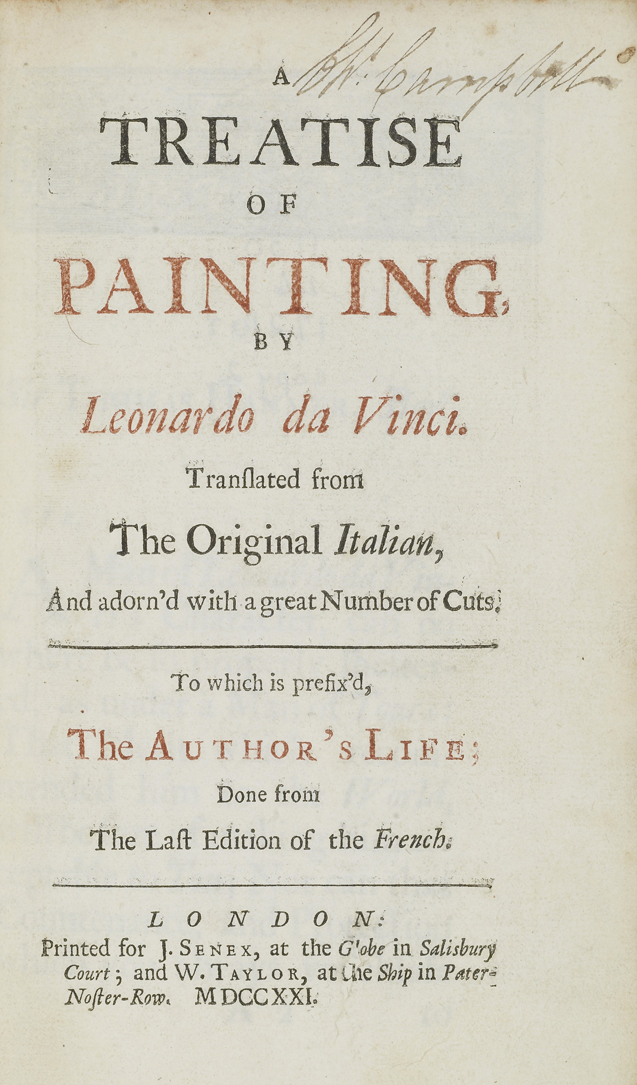
A Treatise on Painting, by Leonardo da Vinci
1721
Senex and Taylor, London
Illustrations:  | Chapter Display  |
I333
The Equilibrium of a Human Body, is of two kinds; to wit, simple and compound: simple is that which a Man makes, in standing steady and immoveable on his Feet. In this Situation, whether he stretch out his Arms, or remove them in any manner from his Body; or whether he be seen stooping, his Body being supported on one Foot; still the Centre of his Gravity will be found perpendicular to the Centre of that Foot on which he rests: and when his Body rests equally on both Feet, the Centre of his Trunk, will then, be found perpendicularly over the middle of the Line, which divides the space between the Centres, of the two Feet. By the compound Equilibrium, we mean that which is made, when a Man loaden with some Foreign weight, sustains it by means of different Motions. An Example of this, you have in the Figure of Hercules, who is seen stifleing Antæus, by bearing him up from the Ground, and squeezing him between his Arms, and his Breast: in the Conduct of which, it must be observed, that so much of the weight of his own Body, is thrown behind the Central Line of his Feet, as is equivalent to the weight added before the Central Line, of the said Feet, by the sustension of Antæus.